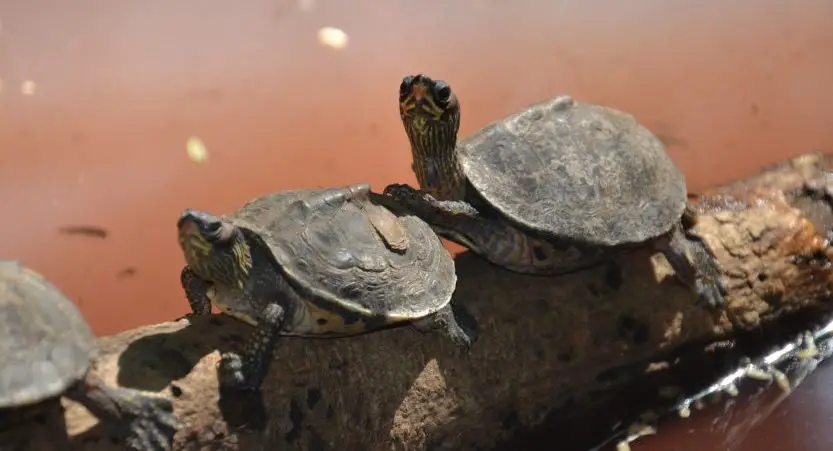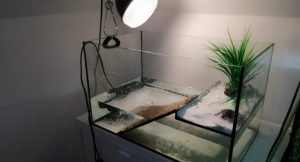Turtle shell peeling may be very surprising for a first-time turtle owner. They may consider it to be a disease or an unhealthy turtle shell. For long-time owners, this is common, and I bet you are used to it. You should also know some of the reasons why turtle’s shell peel. Let us help the first-time turtle owners understand why turtles shell peel.
So, why is my turtle’s shell peeling?
There are a few reasons why a turtles shell may peel. The shell may peel as a defense mechanism from bacteria and other infections. It may peel to allow the turtle to grow. The shell may also peel to help the shell heal if it was hurt. These are just some of the reasons as to why a turtle’s shell may peel.
Although peeling is a regular occurrence, you should understand that there is healthy peeling and unhealthy peeling. You should not assume as this may put your turtle at risk. Stay tuned to learn how to distinguish between a healthy and an unhealthy shell peeling.
My Turtle’s Shell Is Peeling…Why?
Like I mentioned before, a turtle’s shell may peel due to various reasons. The turtle may be growing. Since a turtle’s shell is not as elastic as a human’s skin, the turtles grow until the outer skin cannot hold it anymore, resulting in outer skin fracturing and peeling. The turtle has about 60 bones in the shell. These shells are covered with a hard outer layer called the scutes. Beneath the scutes, there is a thin layer of epithelium. This is the layer that makes the scutes. As the turtles grow, this epithelium makes bigger scutes making the outer scutes to expand. This expansion is what causes peeling. A healthy turtle will shed his outer skin once a year to ensure that the skin does not get too thick and heavy, hindering their swimming ability. Other than growing, a turtle may shed his skin when he is hurt. In this case, the shedding will be unhealthy as the turtle is shedding as a way to help heal a hurting shell. When he is hurt, he will continuously peel the skin which is not okay. You should ensure that you visit a vet. Sea turtles are prone to infections, bacteria’s and algae coatings. For them to ensure that their shells are not damaged by these parasites, they shed their skins from time to time. This is a defense mechanism among sea turtles.

How Often And What Types Of Turtles Peel Their Shells?
From what I have learned over the past years, turtle peeling is mostly common among the turtles that spend most of their time in the water. Like I said earlier, the shedding is a defense mechanism against infections. In the water, there are lots of parasites ready to devour the turtles. The turtles, therefore, have a way to defend themselves against this. It’s in the water where you find all kinds of bacteria; it is where you will get plant parasites such as the algae that attach themselves inside the shell and start to grow.
There are also high ammonia levels in the water which is not healthy for turtles. Check 4 easy steps to clean turtles tank. The turtles peel their outer skin more often to ensure that the water infections do not damage their shells altogether.
Turtles that spend their time on land do not peel their shells most of the time unless their shell is damaged, and they are trying to heal themselves. Since basking is very important to the turtles, the turtles will peel to ensure they absorb most of the UV radiation.
The turtles have a specific season when they peel their shells. This is before they hibernate and after the hibernation is over. Before hibernation, the turtles peel to prepare them for the long rest ahead of them. After hibernation, the turtles bask a lot, and this calls for more peeling so that they can absorb more UV radiation.
What To Look For In Turtle Shell Peeling
There are different things you should look for when your turtle peels. This will help you to determine whether the peeling is healthy is or unhealthy. For healthy peeling, the scute peel easily. They will not only peel on top of the shell but also beneath the shell and the side. When a turtle peels the whole shell easily, the peeling is healthy, and this should not worry you. You should let the shell peel off by itself. Do not try to force the skin to peel. This could cause more complications.
How To Recognize Healthy Turtle Shell Peeling
I have talked about how to know a healthy or unhealthy shell peeling above. Here are additional ways to recognize whether the peeling is healthy. The easiest way is to check whether the outer skin falls off as a whole. For a healthy turtle, the shell peels off uniformly and as a whole. If this is not the case for your turtle, there is a problem with your turtle.
Check for any injuries or blood in your turtle’s shell. Non-uniform peeling could be a sign of a damaged shell. Another way to know that the peeling is healthy is the turtles do try to eat the scutes ones they fall off. They will not attempt to swallow scutes from an unhealthy shell. Try to keep the scutes away from your turtle as this could be a hazard.
Related Question:
Is It Normal For Turtle’s Shells To Peel?
The peeling of a turtles shell is very reasonable and healthy. It is a way to ensure the growth of a turtle. Shell peeling also gets rid of all the blockages in the turtle’s shell, and this helps the turtle make good use of the basking time. They will absorb most of the UV radiation from the sun.
Why Is My Tortoise’s Shell Peeling?
There are various reasons why your tortoise’s shell could be peeling. The reasons could be growth, basking, or a damaged shell. The peeling could be a way to remove all the dirt in the turtle’s shell. The peeling could also mean that the environment is not safe for the turtle as the stones and walls are scratching the tortoiseshell.
Why Is My Turtle’s Shell Turning White?
The three apparent reasons could be a hard water reaction, a fungal infection or shell rot. For the fungal infection, the patches will not be evenly distributed. If your turtle’s shell turns white, take your turtle to a vet or treat the shell yourself. You will need a few things like soap, brush, towel, and medicine.
How Do You Fix Turtle Shell Rot?
Shell rot is rough and discolored. Spot the shell rots and get a mild soap and a toothbrush. Scrub the area gently to get rid of all germs and algae that may have grown. Wipe the area with a towel and afterward apply a bacteria killer agent such as betadine and povidone-iodine. You should also be careful as the medicines are not that safe.
Turtle Shell Problems.
Turtle shell problems result from issues such as poor diet, poor care, and injuries. You should ensure that your turtle is always healthy. Get the proper diet for him and ensure that the environment is safe. Some environments do damage the shells. Get a good environment to prevent turtle shell problems.
Save this pin about Turtle Shell Peeling on your pet-related board on Pinterest.





![Read more about the article Why Is My Turtle Not Eating? [Overcome Problem]](https://turtlepets.com/wp-content/uploads/2019/11/Why-Is-My-Turtle-Not-Eating-e1575129449277-300x162.jpg)